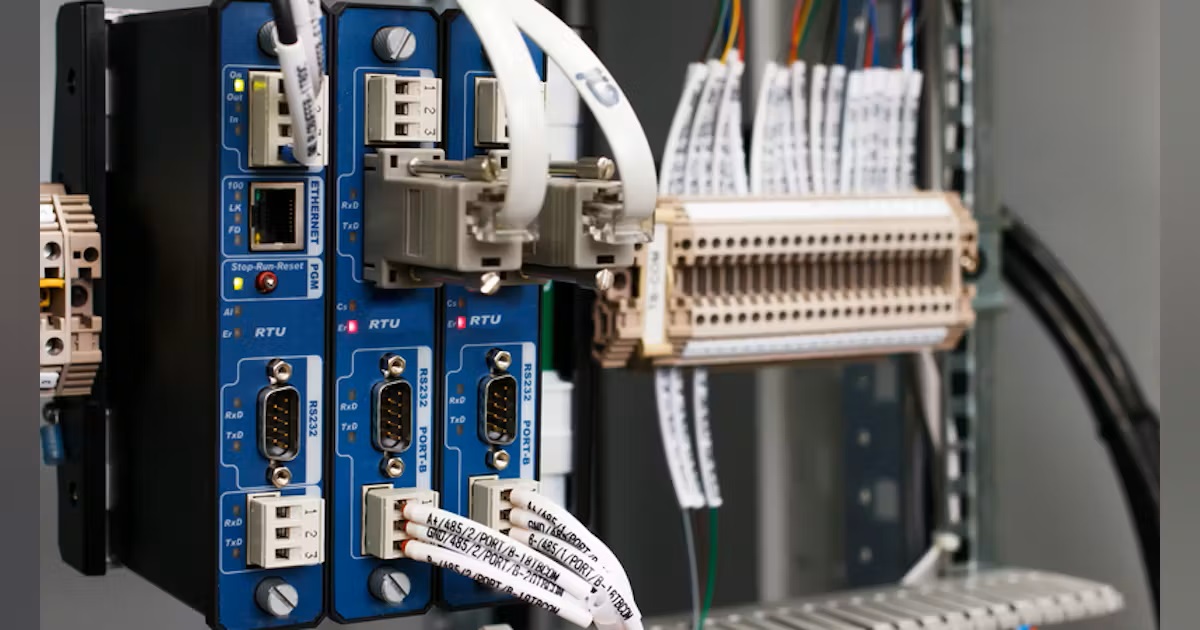United States Renewable Energy market size was USD 214.73 billion in 2023 and the market is projected to touch USD 537.28 billion by 2032, at a CAGR of 10.73% during the forecast period. Renewable energy is defined as energy obtained from natural processes that are continuously replenished, including sunlight, wind, rain, tides, and geothermal heat.
The US renewable energy market has grown significantly in recent years as a result of increased environmental consciousness, government incentives, and advances in technology. Solar and wind energy are the dominating segments, because to lower costs and widespread acceptance. Solar energy, derived from the sun’s rays, and wind energy, captured via turbines, have become more efficient and cost-effective, making them popular options for both home and commercial use.
Government initiatives, such as tax breaks and subsidies, have been essential in promoting renewable energy installations. Furthermore, many states have established ambitious renewable energy objectives, accelerating the market. Transition to renewable energy is also spurred by the desire to cut greenhouse gas emissions and battle climate change.
United States Renewable Energy report scope and segmentation.
United States Renewable Energy dynamics
The US Renewable Energy market is being driven by a combination of favourable regulations, technology advancements, and shifting consumer tastes. Government incentives, such as tax credits and renewable portfolio standards, have helped to increase the use of renewable energy sources. These policies reduce financial obstacles for both producers and consumers, promoting investment in solar, wind, and other renewable energy technologies. Furthermore, many states have adopted ambitious renewable energy objectives, bolstering market growth.
Technological advances have had a major effect on market dynamics. The cost of solar panels and wind turbines has dropped dramatically over the last decade, making renewable energy more accessible and affordable. Energy storage innovations, such as better battery technology, are addressing the intermittent nature of renewable energy sources, improving their reliability and grid integration.
Consumer preferences are progressively shifting toward sustainable and ecologically favourable energy sources. This trend is being driven by an increased knowledge of climate change and the environmental consequences of fossil fuels. As a result, residential, commercial, and industrial users are increasingly seeking renewable energy alternatives.
However, the market faces challenges, including the need for substantial investments in grid infrastructure to support the integration of renewable energy and the variability of renewable sources.
United States Renewable Energy drivers
Government Incentives and Policies
Government incentives and supportive policies are key drivers of the US renewable energy market. Federal tax incentives, such as the Investment Tax Credit (ITC) for solar energy and the Production Tax Credit (PTC) for wind energy, have greatly lowered the cost burden for developers and investors, hence encouraging expansion and acceptance. Furthermore, renewable portfolio standards (RPS) imposed by many states require a specific percentage of electricity to originate from renewable sources. These rules establish a stable and predictable market environment, supporting long-term investments in renewable energy installations.
Technological Advancements
Continuous developments in renewable energy technologies reduce costs and increase efficiency, making renewable energy sources more competitive with traditional fossil fuels. Innovations in solar photovoltaic (PV) technology, such as the development of high-efficiency solar cells and more cost-effective manufacturing techniques, have resulted in a significant reduction in solar power costs. Similarly, innovations in wind turbine design and materials have improved energy capture while lowering maintenance costs. Furthermore, developments in energy storage technology, particularly in lithium-ion batteries, are solving the intermittent challenges of solar and wind power, boosting grid stability and reliability.
- Restraints:
Intermittency and Grid Integration Challenges
One of the biggest limitations to the renewable energy market is the intermittent nature of solar and wind power, which is dependent on weather and time of day. This fluctuation complicates grid managers’ efforts to ensure a steady and reliable electrical supply. Without efficient energy storage solutions or grid management technology, large-scale renewable energy integration might cause grid instability. Furthermore, the existing grid infrastructure in many locations is insufficient to handle the changing production from renewable sources, demanding considerable improvements and investments.
High Initial Investment Costs
While the long-term operating expenses of renewable energy projects are relatively cheap, the initial capital investment might be prohibitively expensive. Installing solar panels, wind turbines, and associated infrastructure involves a significant upfront investment, which can be prohibitively expensive for small and medium-sized businesses and homeowners. Financing these projects frequently requires complex financial arrangements and reliance on government incentives, which might shift over time. High initial prices can discourage potential investors and hinder the adoption rate of renewable energy technology.
- Opportunities:
Advancements in Energy Storage Solutions
The development and deployment of improved energy storage technologies represent a promising opportunity to address the intermittency challenges associated with renewable energy. Improved battery technologies, such as solid-state batteries and flow batteries, increase storage capacity, improve energy density, and lower costs. These developments make it easier to store extra energy generated during peak production periods and release it during periods of high demand or low output. Enhanced energy storage systems can help to integrate renewable energy into the grid, increase grid stability, and enable the transition to a more robust and dependable energy system. Additionally, they create prospects for new business models, including as home and communal energy storage systems.
- Segment Overview
The U.S. renewable energy market is segmented by type into wind power, hydroelectric power, solar power, bioenergy, and geothermal. Wind power harnesses the kinetic energy of wind through turbines to generate electricity, making it one of the fastest-growing segments due to technological advancements and decreasing costs. The most established form of renewable energy, hydroelectric power, uses the flow of water from rivers or dams to generate electricity, providing a dependable and continuous energy supply. Solar power, which uses photovoltaic cells to harvest energy from the sun, has grown rapidly due to lower solar panel prices and favourable regulations. Bioenergy, generated from organic resources such as plant and animal waste, is a versatile energy source that can be utilized to generate power, heat, and biofuels. Geothermal energy, which uses heat from the earth’s interior, is a reliable and continuous energy source, but its use is limited to areas with high geothermal activity. Together, these different energy types provide a holistic approach to lowering dependency on fossil fuels and minimizing the environmental consequences.
Residential, industrial, commercial, and other end-user segments make up the renewable energy industry in the United States. Residential customers generally employ solar power for personal electrical requirements, motivated by incentives such as net metering and lower installation costs. The industrial sector, which includes manufacturing and large-scale activities, is increasingly turning to renewable energy to reduce operational costs and meet sustainability objectives, with wind and bioenergy being attractive due to their scalability. Commercial users, such as office buildings, retail spaces, and data centers, are also investing in renewable energy to cut energy costs and strengthen their green credentials. The most prevalent options are solar and wind.
United States Renewable Energy market competitive landscape
Major firms such as NextEra Energy, Duke Energy, and Dominion Energy are at the forefront of the sector, investing heavily in wind, solar, and other renewable projects while utilizing their extensive infrastructure and resources to efficiently scale operations. These companies are not only increasing their renewable energy portfolios, but they are also actively engaged in R&D to improve the efficiency and cost-effectiveness of renewable technology.
Innovative start-ups play an important role in pushing technology advances and developing new business strategies. Companies like Sunrun and Vivint Solar are pioneering residential solar solutions with innovative financing options such as solar leases and power purchase agreements (PPAs), making solar energy more accessible to homeowners. In the wind energy sector, companies like Pattern Energy and Invenergy are developing large-scale wind farms, often in collaboration with local communities and landowners.
Global energy companies, including Siemens Gamesa, Vestas, and Ørsted, are investing heavily in the US market, bringing their knowledge and technological advances. These foreign players contribute to more competition, lower costs, and faster adoption of renewable energy technologies.
Collaborations and partnerships are frequent strategies in the competitive environment. Utility companies frequently collaborate with technological businesses and financial institutions to create and fund large-scale renewable energy projects. Furthermore, the rise of corporate renewable energy procurement, with businesses like Google, Amazon, and Apple committing to 100% renewable energy objectives, is promoting a competitive market environment in which energy providers compete for lucrative corporate contracts.
United States Renewable Energy Recent Developments
- In May 2024, Brookfield Asset Management, along with Brookfield Renewable and Microsoft are excited to announce the signing of a global renewable energy framework agreement. This agreement aims to support Microsoft’s goal of ensuring that 100% of its electricity consumption, 100% of the time, is matched by zero-carbon energy purchases by 2030.
Scope of United States Renewable Energy report
United States Renewable Energy report segmentation
In case you don’t find what, you are looking for, please get in touch with our custom research team at
Latest Report
https://organicmarketresearch.com/press-release/saudi-arabia-influenza-vaccine-market
https://organicmarketresearch.com/press-release/saudi-arabia-smart-meters-market
https://organicmarketresearch.com/press-release/saudi-arabia-in-vitro-diagnostics-market
https://organicmarketresearch.com/press-release/uae-green-energy-market
Contact Us
+91 9319642100
sales@organicmarketresearch.com
Noida One Tower Sec 62 Noida 201301
Website: https://organicmarketresearch.com













